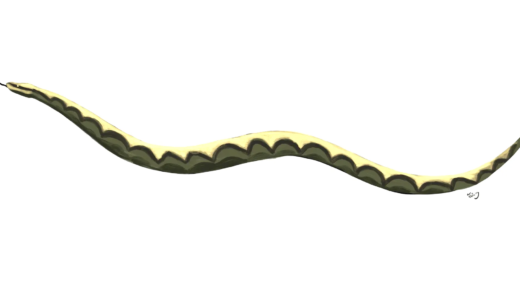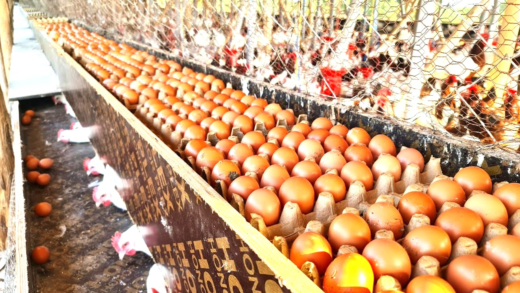Dwarf Pencilfish are small, colorful fish known for their peaceful nature and stunning appearance. They thrive in community tanks but can be shy around active fish. Ideal tank conditions and careful feeding strategies are crucial for their well-being. Their vibrant colors and unique behaviors make them a favorite among aquarists, ensuring they remain a captivating addition to any aquarium.
Unique Traits of Dwarf Pencilfish
Dwarf Pencilfish, scientifically known as Nannostomus marginatus, are captivating little creatures that stand out in the aquarium world. One of the most remarkable characteristics of Dwarf Pencilfish is their slender, elongated bodies, which can reach up to 2 inches in length. Their vibrant color patterns, often featuring a combination of yellow, blue, and orange stripes, make them visually appealing. These colors tend to become more pronounced when they are healthy and comfortable in their environment.
Another unique trait is their peaceful nature. Dwarf Pencilfish are typically calm and non-aggressive, making them perfect for community tanks. They prefer to swim in schools, so it’s advisable to keep them in groups of at least five to ensure they feel secure. This schooling behavior not only provides a sense of safety for the fish but also enhances the visual appeal of the aquarium.
In addition, Dwarf Pencilfish are known for their unique feeding habits. They are surface feeders, often seen darting to the top of the tank for food. Their small mouths are adapted for picking at tiny food particles, making it essential to provide appropriate food options. Overall, the unique traits of Dwarf Pencilfish contribute to their charm, making them a favorite among aquarium enthusiasts.
The Intimidation Factor
Dwarf Pencilfish are known for being shy, especially around more active fish species. This intimidation factor can be attributed to their small size and peaceful temperament. When placed in a community tank with larger or more boisterous fish, Dwarf Pencilfish may become stressed, leading to hiding behaviors. They often retreat to plants or decorations, which can limit their interaction with other fish.
Their timid nature means they thrive in calmer environments. It’s crucial for fish keepers to consider tank mates carefully. Suitable companions include other small, non-aggressive species like tetras or rasboras. These combinations allow Dwarf Pencilfish to feel safe while still being active and visible in the tank.
Moreover, providing plenty of hiding spots with plants and decorations can help reduce stress. This setup not only aids in their comfort but also encourages natural behaviors. By creating a serene environment, fish enthusiasts can ensure that Dwarf Pencilfish are happy and healthy.
Interactions with Tank Mates
When it comes to interactions, Dwarf Pencilfish are generally friendly and social. They tend to get along well with other small, peaceful fish. However, the choice of tank mates is critical for their well-being. Aggressive or overly active fish can cause stress, leading to a decline in health.
Ideal tank mates for Dwarf Pencilfish include:
- Tetras
- Rasboras
- Small Gouramis
- Other Dwarf Pencilfish
It’s important to maintain a balanced community where all species can coexist peacefully. Observing their interactions can be quite fascinating, as they often engage in playful swimming and foraging activities with compatible tank mates.
To foster positive interactions, ensure that the aquarium is spacious enough for all fish to establish their territory. This space prevents overcrowding, which can lead to conflicts. By carefully selecting tank mates and providing a harmonious environment, fish keepers can enjoy watching their Dwarf Pencilfish thrive alongside other species.
Feeding in a Community Tank
Dwarf Pencilfish thrive in community tanks, but feeding them requires special consideration. These fish are small and often shy, making it essential to provide food that caters to their feeding habits. They are surface feeders, meaning they prefer to eat at the top of the tank. A varied diet is crucial for their health, consisting of high-quality flakes, micro-pellets, and live or frozen foods like brine shrimp or daphnia. This variety not only meets their nutritional needs but also stimulates natural foraging behaviors.
It’s advisable to feed them small portions several times a day rather than one large feeding. This approach mimics their natural feeding patterns and ensures that all fish, including Dwarf Pencilfish, get enough food. Pay attention to how quickly they eat; if food remains uneaten, it can pollute the tank and affect water quality. This is especially important in community tanks, where competition for food can be fierce.
To enhance feeding, consider using a feeding ring or floating feeder to ensure that food stays at the surface longer. This allows Dwarf Pencilfish to eat comfortably without being outcompeted by more aggressive species. Always monitor their feeding habits and adjust food amounts accordingly to maintain a healthy and harmonious tank environment.
Ideal Tank Conditions
Dwarf Pencilfish require specific tank conditions to thrive. First and foremost, they prefer a well-planted aquarium with plenty of hiding spots. This setup mimics their natural habitat and helps reduce stress. A tank size of at least 10 gallons is recommended, as it provides enough space for them to swim and explore. The water should be soft to slightly acidic, ideally between 6.0 and 7.5 pH, with a temperature range of 75-82°F (24-28°C).
Lighting should be moderate; too bright can scare them, while dim lighting encourages their natural colors to shine. Additionally, gentle filtration is essential to avoid strong currents, which can be intimidating for these delicate fish. Regular water changes—about 25% weekly—are necessary to keep the environment clean and healthy.
Lastly, ensure that the tank is well-cycled before introducing Dwarf Pencilfish. A stable environment helps them adapt quickly and reduces the risk of stress. By providing these ideal tank conditions, fish keepers can enjoy watching their Dwarf Pencilfish thrive and display their vibrant colors.
Ensuring Fair Food Distribution
Ensuring that Dwarf Pencilfish get their fair share of food in a community tank can be a challenge. Given their shy nature and small size, they may struggle to compete with larger or more aggressive fish. To promote equitable food distribution, it’s essential to implement several strategies. First, feeding at scheduled times can help establish a routine, allowing all fish to anticipate and prepare for meals.
Another effective method is to scatter food across different areas of the tank. This technique encourages all fish to forage, reducing the likelihood of any one species dominating the feeding session. Using feeding rings can also help keep food concentrated in one area, allowing more timid fish, like Dwarf Pencilfish, to eat without the stress of competition.
Moreover, consider using smaller food particles that are easier for Dwarf Pencilfish to consume. This way, they can still get the nutrition they need without being overwhelmed. Lastly, observing feeding behavior closely can provide insights into any adjustments needed in feeding strategies. By being mindful of their feeding habits and tank dynamics, fish keepers can ensure that Dwarf Pencilfish receive their fair share of food, promoting their health and happiness.
Color Patterns and Aesthetics
Dwarf Pencilfish are known for their stunning color patterns that make them a highlight in any aquarium. Their body displays a harmonious blend of colors, predominantly featuring delicate yellow, blue, and orange stripes. These vibrant hues not only enhance their visual appeal but also signal their health and well-being. Healthy Dwarf Pencilfish showcase bright colors, while stressed individuals may appear dull and washed out.
When observing them, you may notice that their colors become more pronounced when they are comfortable and socializing with their tank mates. This aspect adds to the aesthetic value of an aquarium, as groups of Dwarf Pencilfish swimming together create a lively and colorful scene. Moreover, their elongated bodies and graceful movements contribute to their charm, making them a favorite among aquarists.
In terms of aesthetics, Dwarf Pencilfish also have a unique way of interacting with their environment. Their schooling behavior, combined with their striking colors, makes them an attractive addition to well-planted tanks. This not only provides shelter but also enhances their natural beauty as they dart in and out of the greenery.
Fun Facts about Dwarf Pencilfish
There are several intriguing facts about Dwarf Pencilfish that every aquarist should know. Firstly, these fish are not only visually appealing but also display interesting behaviors. They are known to be excellent jumpers, so ensuring a covered tank is crucial to prevent any escape attempts.
Another fun fact is that Dwarf Pencilfish have a unique way of communicating. They use body language and color changes to express their mood and establish social dynamics within their school. When excited or during feeding time, their colors may intensify, showcasing their vibrant personality.
Additionally, Dwarf Pencilfish are relatively long-lived for small fish, often reaching up to five years in a well-maintained aquarium. This longevity allows fish keepers to enjoy their company for an extended period. They are also a part of the Characidae family, which includes many popular freshwater fish, making them a great addition to community tanks.
Conclusion
In conclusion, Dwarf Pencilfish are captivating creatures that bring color and life to any aquarium. Their unique traits, peaceful nature, and stunning color patterns make them ideal for community tanks. Understanding their behavior, especially their intimidation factor around more active fish, is essential for creating a harmonious environment.
Feeding them properly in a community setup, ensuring fair food distribution, and providing ideal tank conditions contribute significantly to their health and happiness. With the right care, Dwarf Pencilfish can thrive and display their vibrant beauty, making them a delightful choice for both novice and experienced aquarists.





Comments are closed.